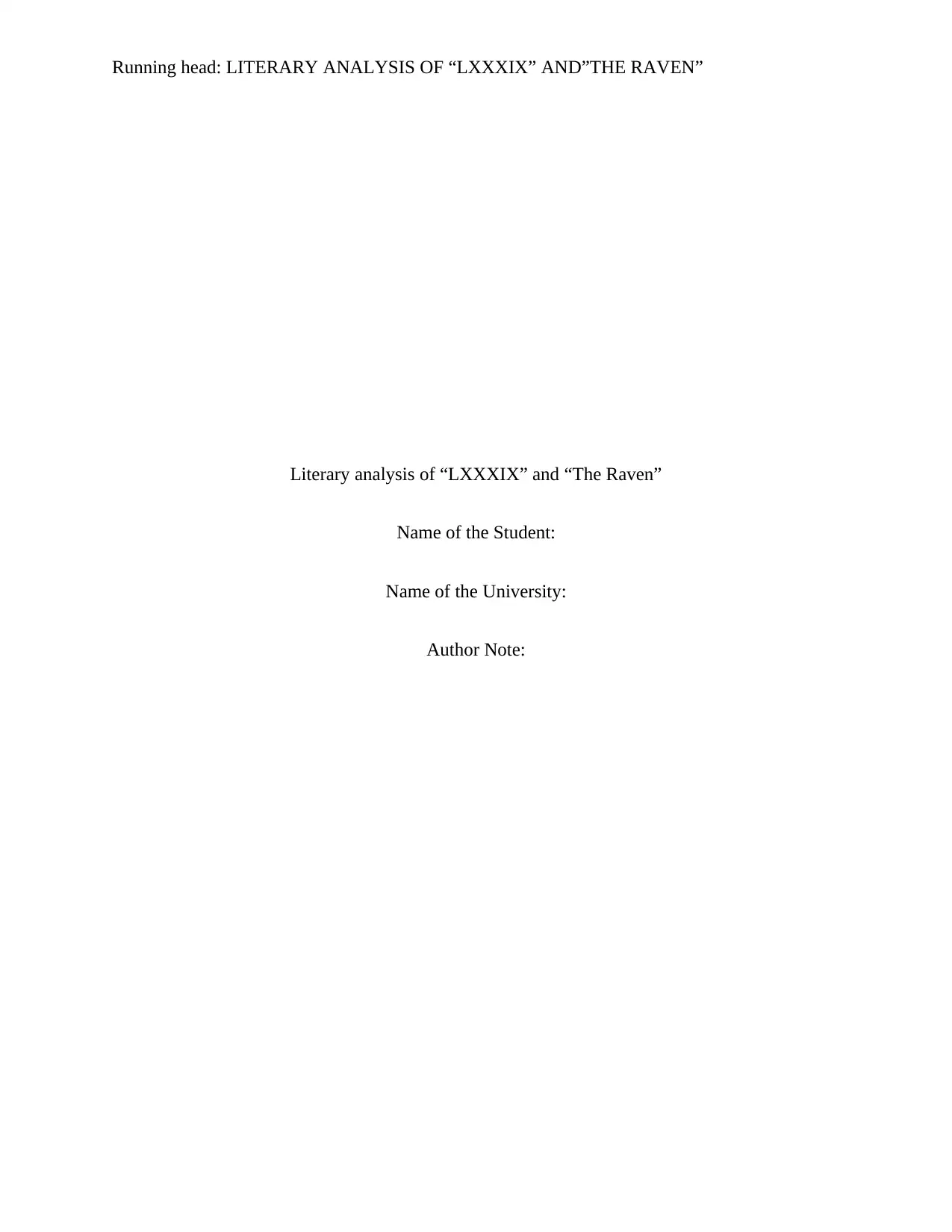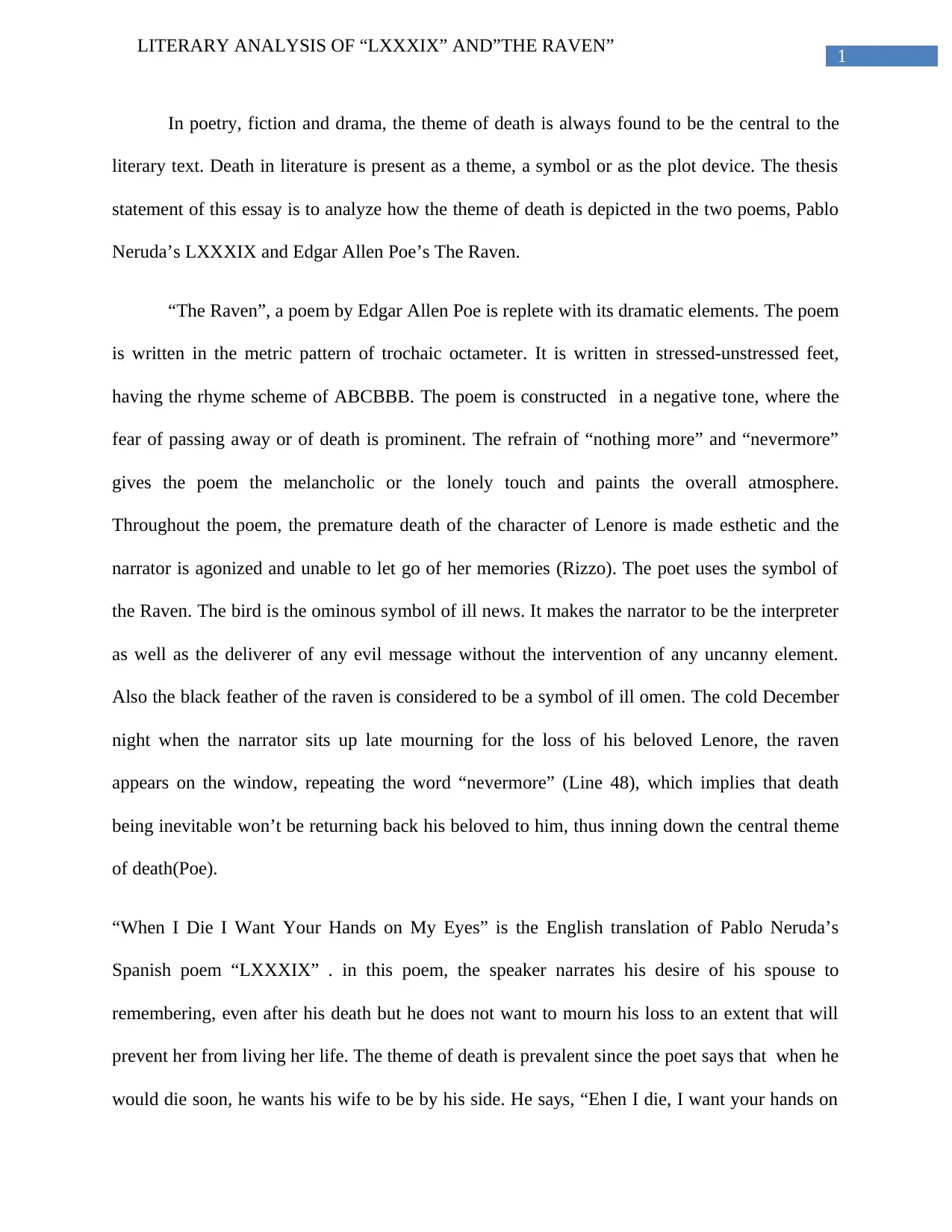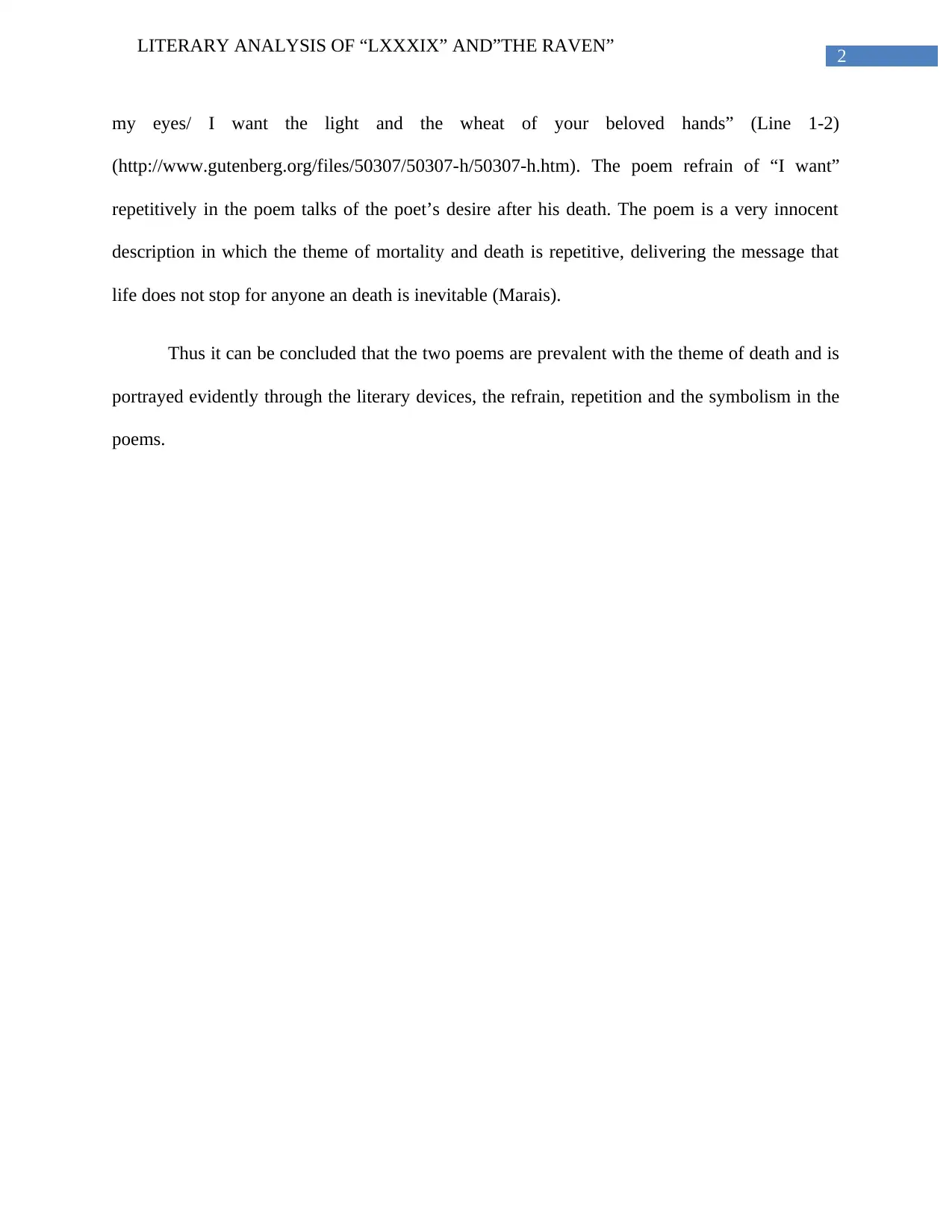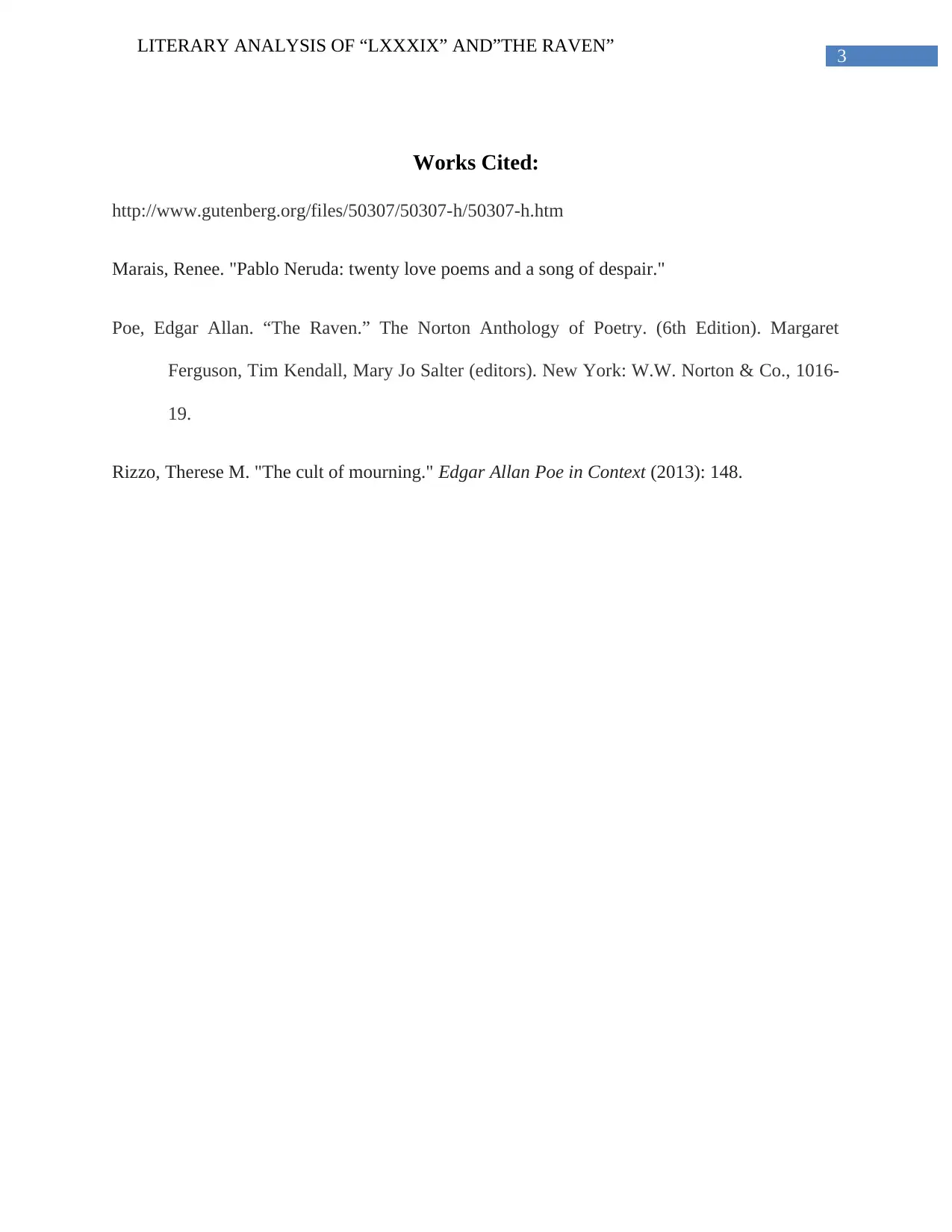Literary Analysis: Comparing Death in 'LXXXIX' and 'The Raven'
VerifiedAdded on 2022/09/28
|4
|690
|23
Essay
AI Summary
This essay provides a literary analysis of the theme of death as depicted in Pablo Neruda's "LXXXIX" and Edgar Allan Poe's "The Raven." The essay examines how death is presented through literary devices, symbolism, and the overall tone of each poem. "The Raven" is discussed in terms of its dramatic elements, including its metric pattern, rhyme scheme, and the ominous symbolism of the raven, which represents ill news and foreshadows the narrator's grief over the loss of Lenore. "LXXXIX" is analyzed for its expression of mortality, the speaker's desires after death, and how the theme of death is presented with the repetition of the phrase "I want." The essay concludes by highlighting the prevalence of the death theme and its portrayal through literary devices in both poems. The essay also mentions the use of refrain, repetition, and symbolism in the poems.
1 out of 4







![[object Object]](/_next/static/media/star-bottom.7253800d.svg)